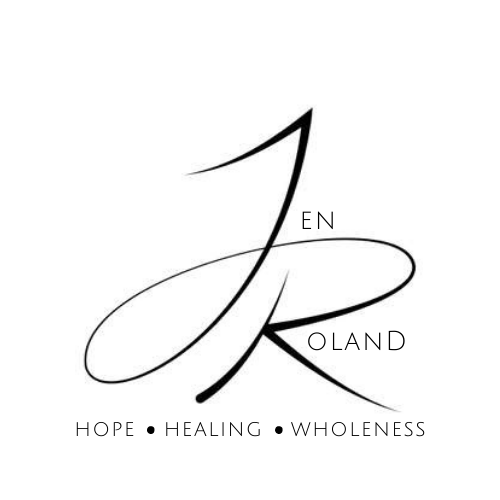When we live with chronic stress or pain—whether from a physical injury, emotional trauma, dysfunctional relationships, or a deeply dissatisfying job—the nervous system works extra hard to try to keep us safe. It labels the stressor or pain as a threat, and reacts in favor of survival, releasing stress hormones (e.g. adrenaline and cortisol) into our bodies to initiate the fight or flight response.
When there is an imminent threat, this response is helpful, but when the threat is constant (as is the case with chronic stress or pain) it creates a problem. The continual release of stress hormones is like keeping your foot on the accelerator of your car—it’ll eventually run of out gas. In the human body, “keeping your foot on the accelerator” might look like not being able to completely relax or unwind, feeling irritable or on edge, nervousness, breathlessness, or an elevated heart and breathing rate, while “running out of gas” might mean not having the energy for routine tasks or basic self-care. These are all signs of an over stimulated nervous system that is programmed to survive rather than thrive.
In my last post, I shared how the practice of deep breathing can usher our body back to a calm, relaxed state. Today, I’m sharing additional strategies to regulate an overstimulated nervous system, reset your stress response, reduce anxiety, and break the pain cycle.
The Autonomic Nervous System Ladder
The diagram below shows the autonomic nervous system as a ladder, to help you identity where you spend most of your time and how you can “climb” toward “ventral vagal activation” (i.e. vagus nerve stimulation), where you feel the most relaxed, safe, at ease, empowered, confident, creative, and connected with others. This is the goal—to not simply survive, but thrive. This is also the state where we experience peace, joy, and healing can occur because our body is no longer in fight or flight/self-protective mode.
The dorsal vagal activation state, the lowest rung of the ladder, is our body’s “freeze response.” When trauma occurs, our nervous system, when unable to go into fight or flight mode, can end up here. This self-protective state is meant to conserve energy for survival, but sometimes we can stay stuck here, releasing stress hormones into our body that cause long-term health issues, such as fibromyalgia, IBS, inflammation, and pain.
This state is characterized by feelings of disassociation, numbness, helplessness, hopelessness, shame, depression, and isolation. It can manifest as an inability to communicate, react, or take any action of self-preservation. The traumatic experience overloads the nervous system and the body essentially shuts down.
When in sympathetic activation, or the “fight or flight state,” we might feel fearful, anxious, worried, angry, or frustrated. Our bodies enter this state when something stressful happens—whether a car crash, argument with a loved one, or difficult diagnosis—to release hormones into our body to give us a boost of energy, but being stuck in this state can make us anxious and reactive, and can cause burnout, fatigue, chronic stress, and pain. Someone who is “hijacked” by the sympathetic response might always feel rushed, pressure to do/be more, or like everything must be done perfectly.
The way we perceive ourselves or our situation can also be a reflection of the state we’re in. Those “stuck” in the dorsal vagal state might feel abandoned, unfairly burdened, or express excessive self-pity. They’ll say things like, “What’s the point?,” “Nothing helps,” “I can’t do it,” or “No one understands.”
Those “stuck” in the sympathetic state tend to spend a lot of time comparing themselves to others, feeling threatened by their success, worrying about what other people think, and/or feel guilty for taking a break. They might say things like, “I’m so busy/overwhelmed,” “There’s too much to do to take a break,” or “They might be able to ___, but I never could.” They’re constantly doing, striving, and living in a state of stress rather than resting in the Lord, seeking His guidance, and living one day at a time.
When in ventral vagal activation—the highest rung of the nervous system ladder—we have a healthy self-image and view of the world. We recognize struggles will come, but feel empowered to manage them by focusing on what we can control and trusting the Lord with the rest. We focus on what we have, not on what we’ve lost, and we have meaningful relationships with God and others that satisfy our basic needs for safety, belonging, and love.
Ventral vagal activation—the “rest and digest state”—is associated with feeling calm, safe, and connected. Here, we experience joy (even in hardship), peace in the midst of chaos, are curious rather than defensive, and feel a sense of being grounded. In our parasympathetic/relaxed state, we are the most creative, confident, and compassionate. We feel a strong sense of hope and purpose.
Someone in this state, even when in a stressful situation, can say, “I am safe,” “I am grateful,” and “I am loved and supported.”

Take a moment to identify the emotions that each rung of the ladder feels like for you. For example:
Dorsal Vagal – lonely, misunderstood, hopeless, unloved
Sympathetic – overwhelmed, distracted, rushed, anxious
Ventral Vagal – seen, held, safe, loved, supported
Next, reflect on where you spend the majority of your time. Is it in the dorsal vagal, sympathetic, or ventral vagal state?
Please know there is no shame if you answered the dorsal vagal or sympathetic state. Life is hard, and the things that happen to and around us have an impact on our emotions. Awareness is the first step to making a positive change, and knowing what to do in difficult situations can help you move up the ladder.
Here are five ways to move up the ladder toward your optimal, “thrive” state:
1. Clarify What You Need
Identifying the emotions you feel on each rung of the ladder gives you insight into what you need to move forward. For example, if you feel alone in the dorsal vagal state, what you need is connection. If you feel hopeless or depressed, what you need is to shift your focus—to look up from your problems to God and His promises, because God will always make a way (Isaiah 43:19).
“If you look at the world, you’ll be distressed. If you look within, you’ll be depressed. If you look at God, you’ll be at rest.” – Corrie Ten Boom
Many times, I need to replace negative thoughts—whether it’s my own voice, the voice of others, or the enemy—with positive ones. Music helps me tremendously with this. I’ve created playlists to help me “climb the ladder” depending on what I need, and I’m sharing them with you below:
Let Go and Trust God
Overcoming Defeat and Hopelessness
Experiencing the Peace of God
Healing Playlist
Finding Comfort in God’s Presence
Anchor Your Identity in Christ
Rejoice in the Lord
Gratitude Playlist
Creating your own playlists can be a great tool to shift your thoughts to what is true and praiseworthy, grounding you in the promises of God (Philippians 4:8).
Another strategy to clarify what you need is called Pause, Think, Pray. When you’re feeling anxious, depressed, irritable, on edge, frustrated, angry, or lonely, PAUSE. THINK about what you are feeling and why (this engages the logical brain). Name the emotion, and then PRAY to ask the Lord for the antidote—whether it’s comfort, stress relief, or self-control—to move up the nervous system ladder to a calmer, more grounded state. The Lord might lead you to a scripture verse, different activity, or simply encourage you to be still in His presence.

2. Change Your Language
The Bible calls us to “let no unwholesome talk come out of our mouths” (Ephesians 4:29), but there is such as thing as “unhelpful talk.” Changing your language around your situation can have profound benefits on your mental, emotional, and physical well-being.
When it comes to living with chronic stress or pain, constantly talking about how bad it is can intensify our perception of it. “Resetting your pain language” by talking less about it and choosing your words more carefully can help. Here’s an exercise, in the Reset Your Pain Alarm Workbook, to neutralize some of the brain’s fear and adjust your pain volume by changing the way you talk (see page 5).
Below, I’ve created a downloadable PDF with 10 Healing Statements that can help you climb the ladder toward a more relaxed state. Speaking these aloud, as silly as it might sound, can actually calm your brain, reduce anxiety, and turn down your body’s stress or pain response.

Click here to download a printable PDF of 10 Healing Statements from my Freebie’s Library
3. Meditate
The goal of Christian meditation is not to empty the mind, but to fill it with God’s Word—messages of hope, love, healing, and safety. Our nervous system is always scanning our internal and external environment for cues of safety or danger. At the foundation of nervous system regulation is assuring our body that, even though the feeling or situation may be unpleasant, we are not in imminent danger. You are safe.
This 6-Minute Meditation from the Curable app is designed to provide reassurance to the body that it is safe during periods of stress, pain, or anxiety. I highly recommend this meditation and the other ones available on the Curable app, an app for people with chronic pain. I use this app regularly and, as a mental health coach, can offer you 6-weeks free by clicking here. (You can cancel anytime and, even if you decide to pay $4.99/month, I can assure you the education, brain-training exercises, writing prompts, meditations, and interviews with medical professionals are worth it.)
While the meditation above was designed for people with chronic pain, speaking messages of safety can help calm down anxiety, reduce fear, be more present, ground yourself in God’s promises, cultivate resilience, and develop healthy coping strategies that you’ll use next time you’re presented with a difficult situation. A phrase as simple as, “I am safe,” “I am loved” or “I am held in the arms of God,” can be incredibly comforting, as can statements such as “God is with me,” “God goes before me,” “God is fighting for me,” and “God will make a way.”
4. Seek Professional Support
You might notice certain “triggers” initiate a stress response in your body. For example, symptoms, words/phrases, smells, actions, or reminders of past trauma may make your anxiety or pain worse, sending you down the ladder toward the sympathetic or dorsal vagal state. Taking note of these and developing an action plan to sidestep or address them can support our nervous system in feeling safe.

If certain environments or people trigger you, focusing on what you can control, setting healthy boundaries, and investing in positive relationships can help. The nurturing presence of another individual who supports you physically, emotionally, and spiritually can enable you to feel more at ease, safe, and connected. Having your voice heard, your feelings validated, and your experience acknowledged without judgment or criticism can be healing and help you feel less alone in what you’re going through.
If you’re struggling with any of these things or have tried to move forward when there are still leftover feelings that haven’t been discussed or explored, this can wreck havoc on your health over time. Do not stifle your desire to express what you’ve experienced—sometimes that is what you need to heal.
For many of us, unraveling the stories of our past, in a safe environment, can help us feel more safe and connected. This opens the door to healing. In the words of clinical psychologist and author, Diane Langberg, Ph.D., “Healing can not occur—whether we’re talking about your own trauma or the witnessing of another’s—unless that what you most want to forget is remembered and that which you can not bear to say out loud is spoken.”
I recently started seeing a therapist to address areas I want to heal and grow. I spent the part of our last session unloading all the things I’d dealt with this week (e.g. chronic pain, relationship tension, COVID). She responded with something that deeply resonated with me. She said, “You keep trying to get water from a rock when you have an entire Well over here.” I interpreted this as I’m trying to control things over which I have no control and hoping for a miracle by doing the same things I’ve always done. Instead of taking matters into my hands, I need to go to the Well—Jesus—and be willing to do things His way.

Sometimes we try to fight our battles horizontally (between us and other people) when what we need to do is look up and remember we are promised supernatural assistance in our trials. Our battles are “not against flesh and blood, but against the rulers, against the authorities, against the powers of this dark world and against the spiritual forces of evil in the heavenly realms” (Ephesians 6:12). Finding a professional who can point you back to God, help you adopt an eternal perspective, and encourage you to “suit up” with the armor of God can be helpful. He or she can also help you better understand yourself, unpack your story, and find healing from trauma that was silenced, stuffed down, or shamed.
If this sounds like something you might benefit from, talking with a therapist can help. Click here to receive two free weeks of therapy through BetterHelp, an online mental health platform that matches you to a qualified counselor based on your specific needs and how you want to grow.
5. Pray
As I mentioned in the previous example, much of our anxiety, frustration, anger, and worry stems from trying to control things we can’t control. The Serenity Prayer below is a great reminder that while we have agency over some things, there are many we need to leave in God’s hands. Asking for His wisdom to know the difference between the two, listening for His response, and being obedient to His guidance saves us a tremendous amount of time and energy. It also reduces the negative emotions that surface when things don’t go our way.
God grant me the serenity to accept the things I cannot change, courage to change the things I can, and the wisdom to know the difference, living one day at a time; enjoying one moment at a time; taking this world as it is and not as I would have it; trusting that You will make all things right if I surrender to Your will; so that I may be reasonably happy in this life and supremely happy with You forever in the next. Amen.
As much as we desire to be in control, we’ll never be able to control other people’s feelings or actions, what they think, what happened in our past, or the results of our future efforts. What we can do is regulate our own thoughts and emotions, set appropriate boundaries, make positive choices, pray before we act or react, speak kindly to ourselves, express our feelings with truth and grace, treat others with love and respect, and set God-glorifying goals. That’s actually quite a lot, so rather than focus on what we can’t control, let’s ask God for the courage to change that which we can!

Once we begin to understand where we are on the autonomic nervous system ladder, we can prioritize nervous system regulation by implementing strategies such as the ones described above. Each of them ushers our body into a calmer, more relaxed state where we can experience God’s peace and meet our basic needs for safety and love.
This week, take some time to make a list of the strategies that help you move up the ladder. If you spend most of your time in the sympathetic state feeling frazzled and overwhelmed, prioritizing your most important tasks for that day, listening to calming music, or exercising to relieve stress could help.
Other strategies not mentioned in this post include deep breathing, practicing gratitude, implementing positive replacement thoughts, massage, getting out in nature, reading a good book, or going for a walk.
Practicing good self-care and seeking positive support are also essential. If you’d like help with these, or want to work with me, click here to schedule a free discovery call or a 30 or 90-min coaching session.
Introducing safety and recovery work into our nervous system is key for our healing. When your body is in a place of rest and relaxation, it gives your nervous system a break, which reduces stress, inflammation, and pain.
As you implement these strategies, be patient with yourself. It will take time, but you will “climb the ladder” toward peace, safety, and connection, feeling more calm and at ease, and move beyond surviving to thriving!
“Taking care of yourself is a resilient act. One that requires vulnerability, rest, and compassion.” Kamil Lewis LMFT
Call To Action: If you haven’t already, take a few minutes to write down the strategies that help you move toward the ventral vagal state. These practices are the tools in your toolbox when entering the “freeze” or “fight or flight” response. As you develop a greater awareness of your triggers and proactively put these strategies into place, you’ll be able to successfully navigate your way back to safety, where you can experience joy, peace, gratitude, creativity, and connection with God and others.





